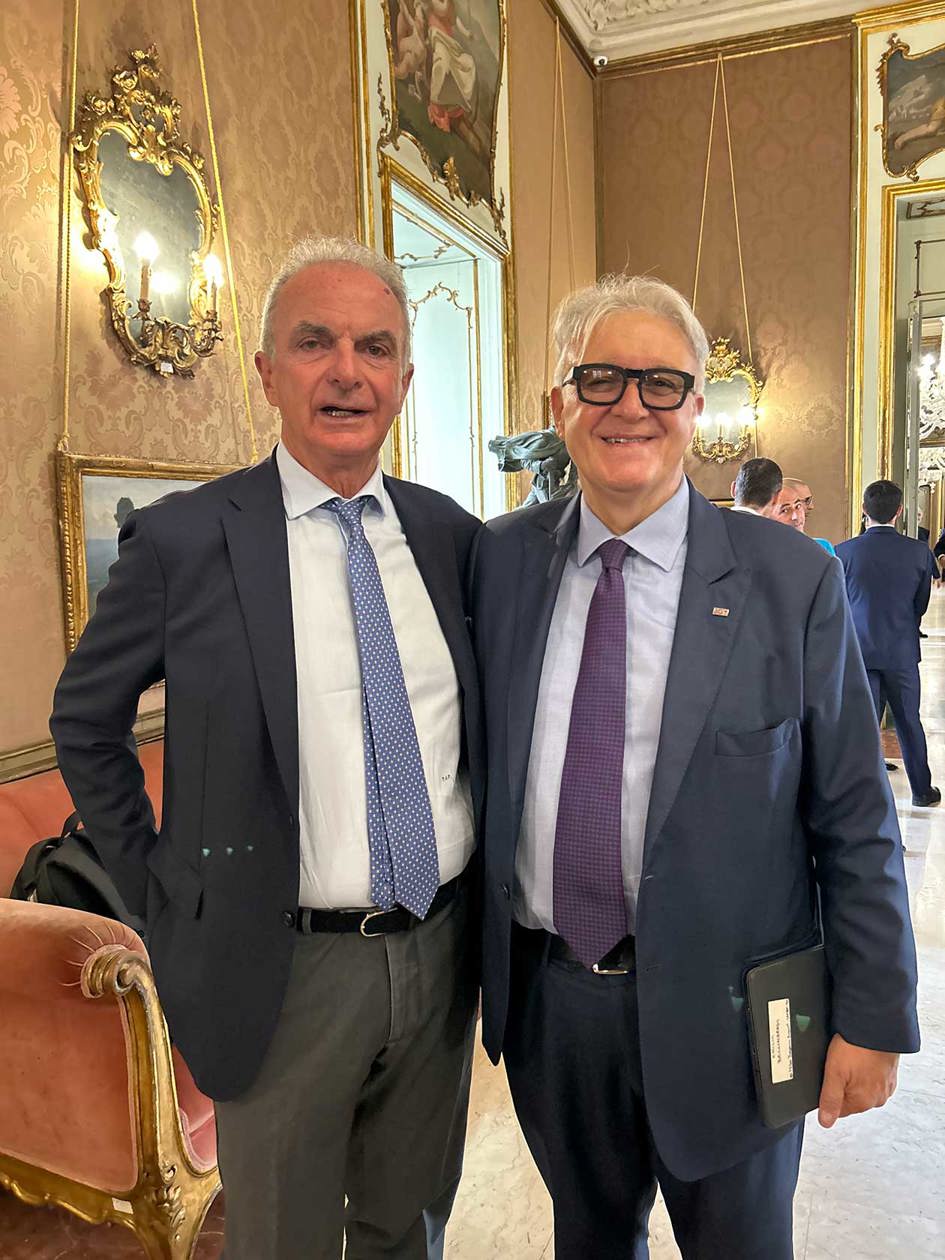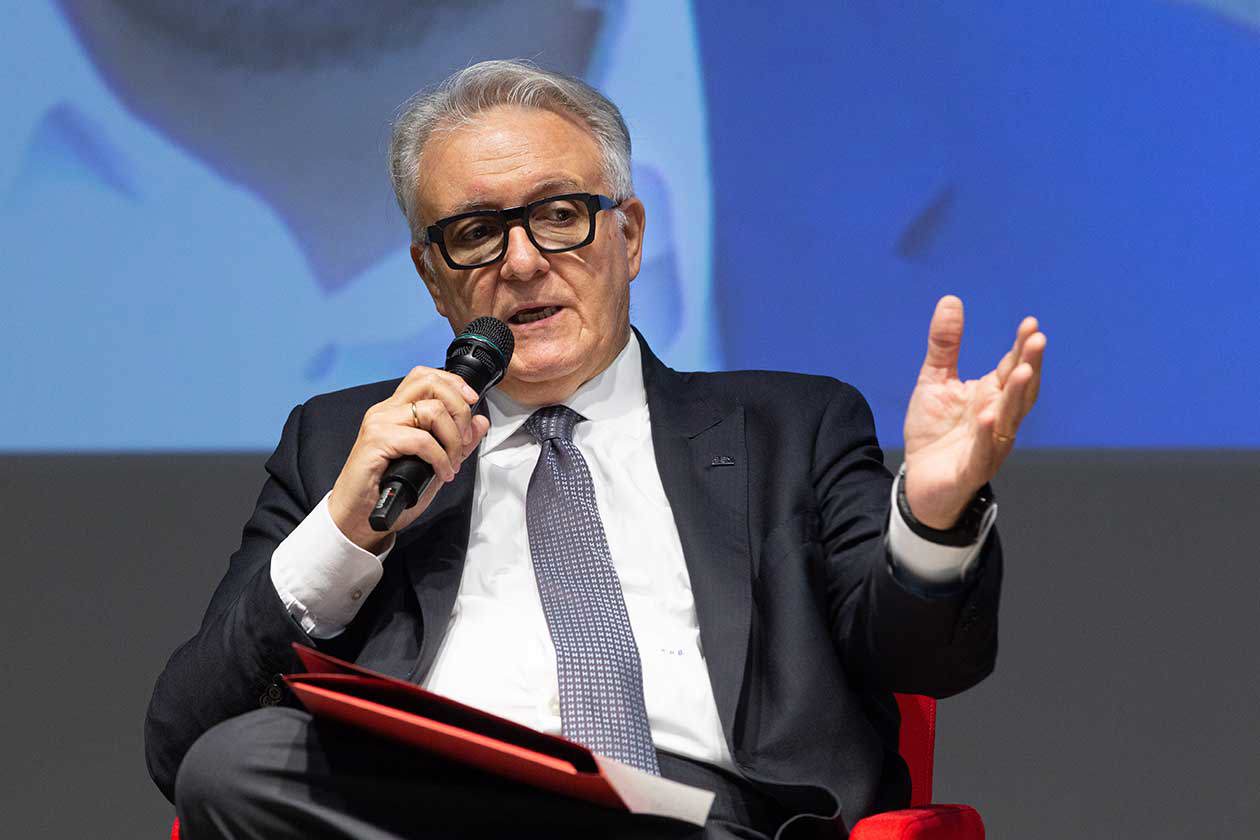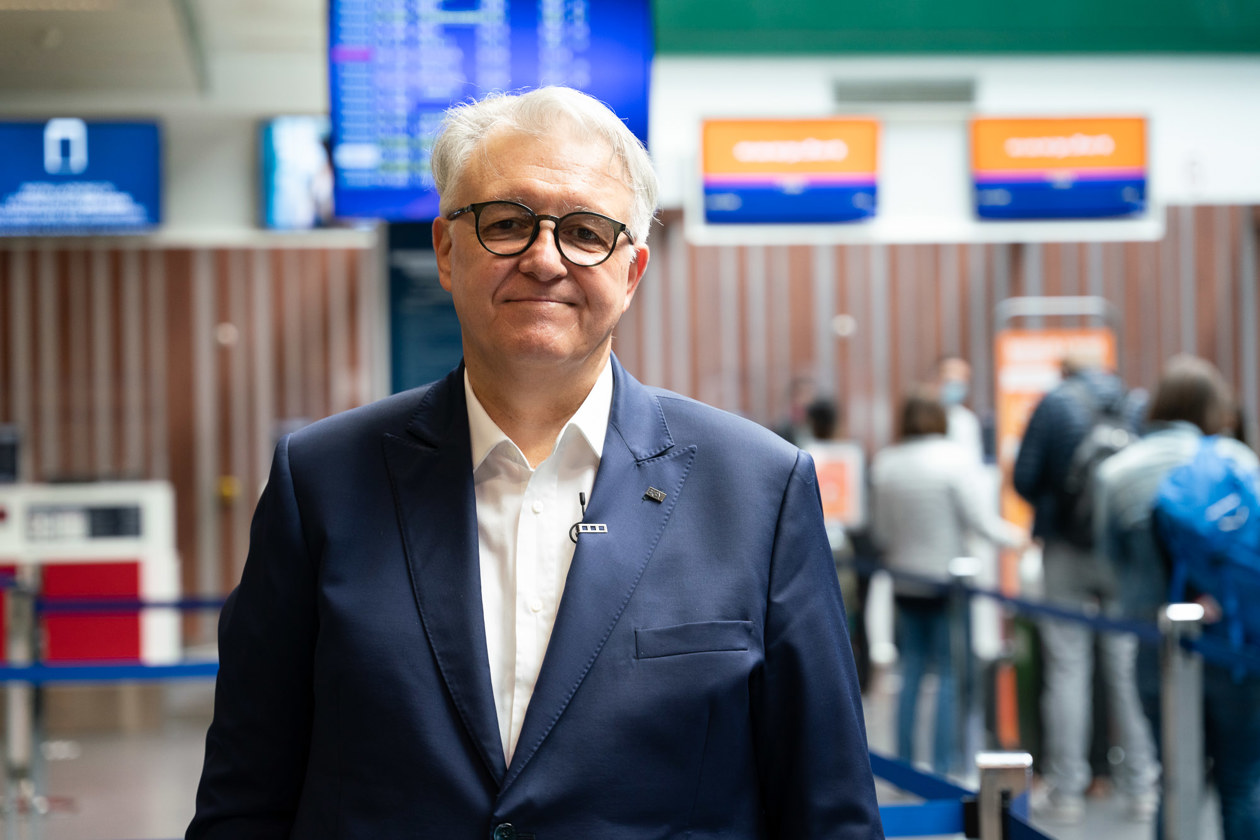06 May 2024
Interview with Emilio Bellingardi
Forty-five years of leadership and innovation: the vision and challenges of an extraordinary career in the airport sector
Your career in the airport sector began in 1979. How has your role evolved over the years?
My career is quite a unique example of growth that matured entirely within the sector. I still remember the beginnings at the lost luggage office at Linate. Although I had enrolled in university, I decided to look for a job and started an activity that completely absorbed me, and gradually, I unfortunately neglected my studies. I made my career entirely within the passenger service at Linate, and later in the cargo sector. Then, I enthusiastically joined the 'Grande Malpensa' project, covering various operational roles until 2002, the year in which the SEA Spa group decided to spin off the handling activity. From that moment, I became a manager in a key sector of assistance. From then on, there were significant years until 2006, when a phone call from Bergamo invited me to meet the then President Ilario Testa. Initially, I entered as Chief Personnel Officer, and then after a few years, became the General Manager. Throughout my career, I have always been fortunate to work in something that I was passionate about".

Pierluigi di Palma Enac President and Emilio Bellingardi Copyright © Sacbo Spa
Since 2015, he has held the position of General Manager of Milan Bergamo Airport.
Can you explain what tasks you have performed and what main strategies you have adopted to effectively develop and implement corporate policies?
"Being a General Manager is like having the helm of a ship: you are responsible for the direction to take. In this position, the role is like that of a director, where pressures are cushioned: on one hand, you absorb impacts from above and on the other, you must manage the expectations of those who work under you.
The people who have collaborated with me over these years had high expectations: they were looking for guidance and operational advice.
In addition to this, there was the challenge of implementing corporate strategies that could sometimes seem ambiguous, despite the shareholders always having a clear vision of what they wanted.
When I arrived, this airport was mainly seen as a secondary alternative to Linate during foggy days. However, the shareholders have always pushed to grow it and turn it into a significant pillar of the Italian airport system. My task has always been to harmonize the push of the shareholders with the effective activation of my collaborators, providing them with the necessary support to realize ambitious projects. This has been the key to turning the vision into a tangible reality".
Under his leadership, the airport has experienced record growth. What have been the key strategies that have led to this significant success?
"Our strategy was decisive: aiming to be pioneers of a radical transformation in the air transport sector. We identified the advent of new flight patterns, inaugurating an innovative approach to improving air accessibility towards Europe. This path, bold and initially met with skepticism, proved to be appropriate. Initially, there were many uncertainties about how we could effectively challenge traditional airlines. However, our belief in the potential for evolution in the air transport sector was rewarded: we confirmed that this new way of flying was essential for establishing a vast network of air connections across the continent".
To what extent has his role as Chairman of the Board of BGY International Services impacted the global strategy of the airport?
"The decision to proceed with the spin-off was not taken lightly. It is well-known that detaching from the parent company is never simple: it's like finding yourself in uncharted waters. This detachment could be perceived almost as a clear separation, but it had become necessary. We, as management, committed ourselves to concretely demonstrate to our team that the new entity would not abandon the goals and commitments we had as an integral part of the original group. To reinforce this message, in the early years post spin-off, I agreed to take on the role of Chairman. This was to send a strong and clear signal of continuity and commitment to our employees. We wanted everyone to know that, despite the major transformations, the essence of our mission remained unchanged. Looking back, I can say with some satisfaction that our bet was won. We navigated through the uncertainties and now can look to the future with confidence, knowing that we have built a solid foundation on which the company can continue to grow and prosper".

Emilio Bellingardi - General Manager of the Milan Bergamo Airport from June 2015 to April 2024 Copyright © Sacbo Spa
What challenges have you faced and how have you overcome them to ensure the success and consistent growth of Milan Bergamo Airport?
"The main challenges we face are oriented towards gaining ongoing acceptance from local communities, proving that a cost-benefit analysis would strongly favor the benefits. This is not always easy. Despite my deep respect for the inhabitants of the areas surrounding the airport, we must continually emphasize that an airport brings significant advantages to a much broader area.
The benefits of Milan Bergamo Airport, for example, extend well beyond the region and, I dare say, beyond national borders, positively influencing the whole of Europe. However, it is true that these benefits tend to be perceived as concentrated in a very limited area. On the other hand, technological advances in recent years have significantly reduced the environmental impact of air transport. I am firmly convinced that, thanks to the joint efforts of aircraft manufacturers, airport operators, and airlines, we will achieve a very high level of environmental compatibility".
In an environment of increasing attention to sustainability, how do you reconcile the growth of air traffic with sustainability? What initiatives is SACBO undertaking to reduce the airport's environmental impact?
"We have actively encouraged airlines operating from our airport to renew their fleets, offering economic incentives to promote this change. As a result, a significant portion of the aircraft now in service is of the latest generation, characterized by a much reduced impact in terms of noise and emissions. Moreover, we have been pioneers in the airport management sector in investing in initiatives that support the local community. For example, we have funded programs that allow residents near the airport to access incentives for improving windows and air conditioning in homes, thus reducing the discomfort caused by noise and airport activities. Our commitment to mitigating environmental impact and improving the quality of life for local residents is constant. Every day we explore new technologies and approaches to ensure that the airport remains a responsible neighbor in a high-density residential area, recognizing the significance and impact we have on the territory".
The advent of new technologies is revolutionizing the aviation sector. What are the main challenges that these technologies pose to airports in terms of infrastructure, security, and regulation?
"Significant innovations emerge daily due to advancements in technology, especially in terms of security and accurate tracking of passengers and luggage. These technological developments not only improve security but also speed up airport processes, such as digital identification and the ability for passengers to check in from home, thus reducing waiting times at the airport. Concurrently, innovations are not limited to management and tracking systems; airlines and aircraft manufacturers are exploring revolutionary technologies such as electric engines, which promise to drastically reduce noise levels, approaching 'zero noise'. This transformation in the aviation sector is also fueled by incentives from the National Recovery and Resilience Plan (PNRR), which has driven the entire sector to actively commit to a more sustainable future. We are living in an era of significant changes, and with ongoing support from programs like the PNRR, it is likely that we will see even larger and quicker transformations in the way we travel and manage air transport in the near future".
What are the future projects for Milan Bergamo Airport and how do you envision its development in the short and medium term?
"I have never been much inclined towards long-term planning. However, from the beginning, we focused on a clear goal: to create the efficient and modern airport you see today. We built the terminal in phases, adapting to market needs and securing the necessary funds. We have achieved significant milestones, becoming the main base for Ryanair (the leading airline in Europe) and especially demonstrating our great operational efficiency. My long-term hope for this airport is to continue playing a significant role within both the Italian and international airport systems".

Emilio Bellingardi - General Manager of the Milan Bergamo Airport from June 2015 to April 2024 Copyright © Sacbo Spa
What are your views on the main challenges that the aviation and airport sector will need to face in the coming years?
"One of the most significant challenges, as previously mentioned, concerns environmental sustainability. However, another critical challenge is avoiding stagnation and accepting the need to constantly reinvent ourselves. Our sector is characterized by incessant change. What we consider innovative today may become obsolete in a short time, relegated to the past like a museum piece. Therefore, the challenge is to keep pace with these changes, which partly represents the secret to the success of these eighteen years. Had we not paid attention and had the ability to understand the rapid evolution of the context, both in terms of airports and airlines, we would not be able to tell this story today".
What have been the most significant moments of your professional career and which achievements are you particularly proud of?
"Significant moments are not only those that are pleasant or those that can be defined as successes. For example, the experience related to the opening of the hub at Malpensa, which over time has proved to be an obsolete model of airport management globally, was extremely formative. It was the first time that an airport hub was created from scratch in Italy, and the process, while particularly challenging and energy-intensive, had an undeniable charm. Another memorable episode was my arrival at Sacbo but also the resurfacing of the airport runway, a period marked by high tension similar to that experienced when we had to manage an incident with an aircraft that went off the runway. In that circumstance, there was a positive side: we managed to reopen the airport in just two and a half hours, a result that is still praised as exceptional and transformed that critical situation into a success story. Ultimately, these forty-five years have been full of valuable lessons. As I mentioned at the beginning, I have been fortunate to always do the work I love, and this is truly an invaluable reward".
With your extensive experience in the sector, are there new professional challenges you wish to tackle, and what are your future plans?
"At the moment, I wish to dedicate more time to my family and friends, people whom I have considerably neglected, especially over the last twenty years. Despite this, they have never ceased to support me. Therefore, I feel I owe them significantly, a debt I intend to repay as soon as possible".
What advice would you give to young professionals aspiring to a successful career in airport management, based on your experience and successes?
"I urge them to pay close attention to operational aspects. An airport distinguishes itself by its ability to be a key player at the financial and infrastructural level. However, without solid operational management, an airport could not function. Current dynamics make it challenging to follow a career path like mine, reaching the position of General Manager. Nowadays, diverse skills and a much more complex background are necessary. However, I believe I was fortunate, as my former boss used to say, to understand both the complex dynamics of the operational field and the internal bureaucratic challenges. This experience has been extremely useful in maintaining focus on the core business of airports and learning to value people, who are the most precious resource of a service company".
Interview by Angela Trivigno
Avion Tourism Magazine
Photos of Emilio Bellingardi: Copyright © Sacbo Spa
You might be interested in
Magazine

Interviews
Ryanair and the Italian market: strategies, routes and growth prospects
Interview with Fabrizio Francioni, Head of Communication Italy at Ryanair
Magazine

Interviews
Interview with Giovanni Sanga
President of Milan Bergamo Airport
Magazine

Interviews
Interview with Aldo Schmid
Head of Aviation Business Development of Milan Airports

